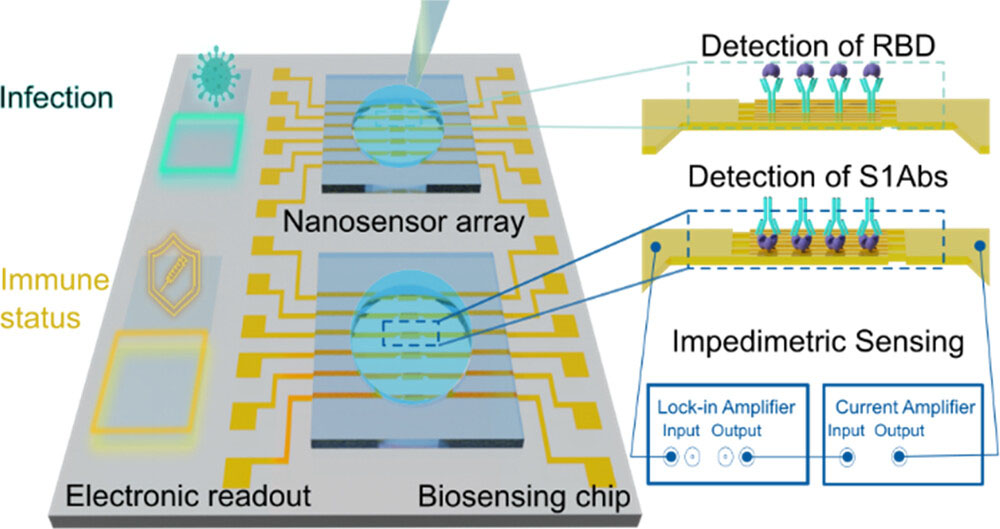| Mar 27, 2023 |
Nanobiosensor developed for detecting SARS-CoV-2
(Nanowerk News) Infection and immunity status within a population are crucial factors in managing pandemics. Detecting antigens and antibodies is essential for this purpose. Point-of-care (POC) devices, which are used for rapid screening, are one option. However, their sensitivity requires improvement. Scientists at Helmholtz-Zentrum Dresden-Rossendorf (HZDR) have successfully developed a gold nanowire-based nanobiosensor to address this issue. Initially designed for detecting COVID-19-related antigens and antibodies, the biosensor can also be adapted for other biomarkers.
|
|
The findings have been reported in ACS Sensors ("Impedimetric Nanobiosensor for the Detection of SARS-CoV-2 Antigens and Antibodies")
|
 |
| Graphical illustration of the work.
|
|
Numerous studies have shown that POC lateral flow tests (LFT) are a reliable and accurate alternative to reverse transcriptase-polymerase chain reaction (PCR) tests for detecting SARS-CoV-2. LFTs offer several advantages over PCR tests, including rapid detection, on-site testing, low cost, and no need for laboratory equipment.
|
|
However, the main drawback of POC biosensors is their sensitivity, which depends on viral load. With high viral loads, sensitivity is 100%, but it can drop below 10% at low viral loads, leading to false negative results. The HZDR researchers aimed to create sensor systems that could detect low virus loads while still providing fast and accurate results.
|
|
Dr. Larysa Baraban and her team at the HZDR Institute of Radiopharmaceutical Cancer Research used gold nanowires to detect various biomolecules, such as enzymes, proteins, and antibodies. They combined this approach with electrochemical impedance spectroscopy, a technique that offers insight into different processes at the electrode-electrolyte interface and the properties of the measurement system, including solution resistance and the roughness or porosity of the electrode surface.
|
|
"In our work, we have developed a nanoscopic biosensor chip consisting of six pairs of interlocking gold nanowire devices for detecting SARS-CoV-2 antigens and antibodies," explains Baraban. "This allows for the detection of both COVID-19-associated antigens and the corresponding antibodies that emerge during and after infection with the virus. We believe that this method can also be adapted for other biomarkers and pathogens. To achieve this, the functional layer targeting the biomolecule must be modified accordingly."
|
|
Currently, discussions and considerations are ongoing with industry partners to determine how the sensor can be manufactured on a large scale at a low cost.
|

